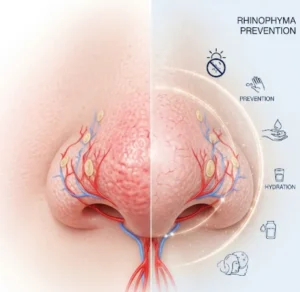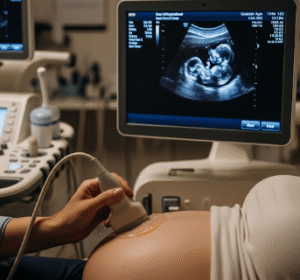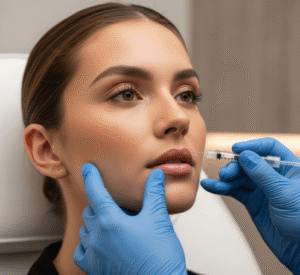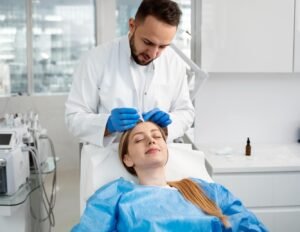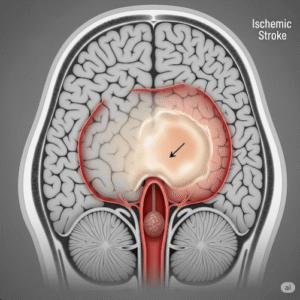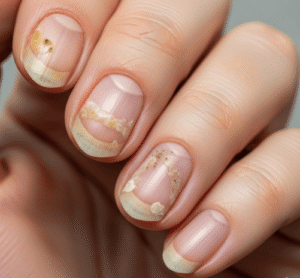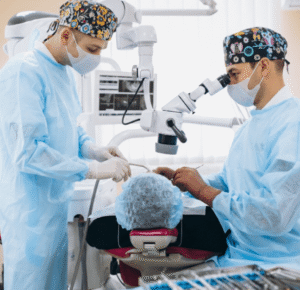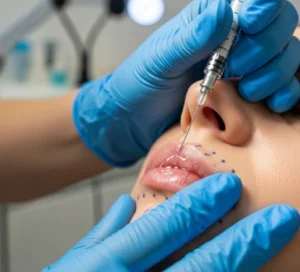What It Is
A custom forehead implant is a cosmetic surgical procedure that enhances the forehead’s contour and projection using a patient-specific, 3D-designed implant. Unlike standard pre-shaped implants, a custom implant is created based on 3D CT scans of the patient’s skull, ensuring a perfect fit and highly natural results.
In Korea, custom forehead implants are a leading solution for patients who want precise, personalized forehead augmentation. Korean surgeons use cutting-edge digital design and manufacturing technology to create implants that align seamlessly with the patient’s natural bone structure, producing smooth and balanced results.
Why It’s Done
Cosmetic Purposes:
- Corrects flat, sloped, or asymmetric foreheads
- Softens masculine foreheads for a more feminine look
- Provides a more balanced side profile when combined with nose or chin surgery
- Enhances harmony between the forehead, brows, and temples
Corrective Purposes:
- Addresses irregularities from trauma or previous surgeries
- Corrects congenital asymmetry or craniofacial deformities
Patient Considerations:
- Best for patients seeking highly personalized results beyond what fat grafting or standard implants can provide
- Suitable for adults in good health with realistic expectations
- Increasingly popular among international patients seeking precision-driven, natural outcomes in Korea
Alternatives
- Fat Grafting: Minimally invasive; provides natural volume but partial absorption is expected
- Dermofat Grafting: More stable than fat alone, but less dramatic than implants
- Pre-Shaped Silicone/Medpor Implants: Standardized solution; less customized fit
- Fillers (Hyaluronic Acid): Temporary (6–12 months); suitable for minor corrections
Preparation
Patients preparing for custom forehead implant surgery in Korea typically undergo:
- Consultation: Detailed facial and profile analysis with 3D imaging
- CT Scans: Used to design a 3D model of the patient’s skull and forehead contour
- Digital Simulation: Allows preview of surgical outcomes and adjustments before implant manufacturing
- Health Screening: Blood tests and general evaluation
- Pre-Surgery Instructions: Stop smoking, alcohol, and blood-thinning medications in advance
- Fasting: Required for 6–8 hours before general anesthesia
How It’s Done
Type: Major cosmetic surgery, performed under general anesthesia
Duration: 2–3 hours
Procedure Steps:
- A small incision is made along the scalp or hairline (hidden scar placement)
- A pocket is carefully created above the forehead bone
- The custom implant, pre-manufactured to exact specifications, is inserted and positioned
- The implant is secured in place for stability and symmetry
- The incision is closed with fine sutures hidden in the hairline
Hospitalization: Typically 1 night in the hospital for monitoring; some cases are outpatient
Recovery
- First Week: Swelling and forehead tightness are common; discomfort managed with medication
- Downtime: Patients usually resume normal activities within 7–10 days
- Restrictions: Avoid strenuous activity and pressure on the forehead for 3–4 weeks
- Final Results: Visible after swelling subsides, usually 1–2 months; implant results are permanent
Possible Complications
- Swelling, bruising, or numbness of the forehead/scalp
- Implant malposition or asymmetry (rare with precise custom design)
- Infection requiring implant removal (very rare with proper aftercare)
- Visible contour irregularities if implant shifts
- Minor scarring (hidden along the hairline)
Treatment Options in Korea
Diagnosis
Korean clinics provide detailed diagnostics through:
- 3D CT Scans for accurate bone mapping
- Digital Design Software for custom implant creation
- Simulation Consultations for previewing results before surgery
Medical Treatments
For patients not ready for surgery:
- Fillers for temporary enhancement
- Fat or dermofat grafting for natural but less predictable results
Surgical or Advanced Therapies
- Custom Forehead Implant Surgery: Fully tailored to the patient’s anatomy
- Hybrid Approach: Custom implant combined with fat grafting for softer transitions
- Revision Forehead Surgery: Corrects irregularities or unsatisfactory results from previous procedures
Rehabilitation and Support
- Regular post-op follow-ups to monitor implant stability
- Scar care management with silicone gel, ointments, or laser treatments
- International patient services: multilingual staff, concierge recovery assistance, and long-term monitoring



